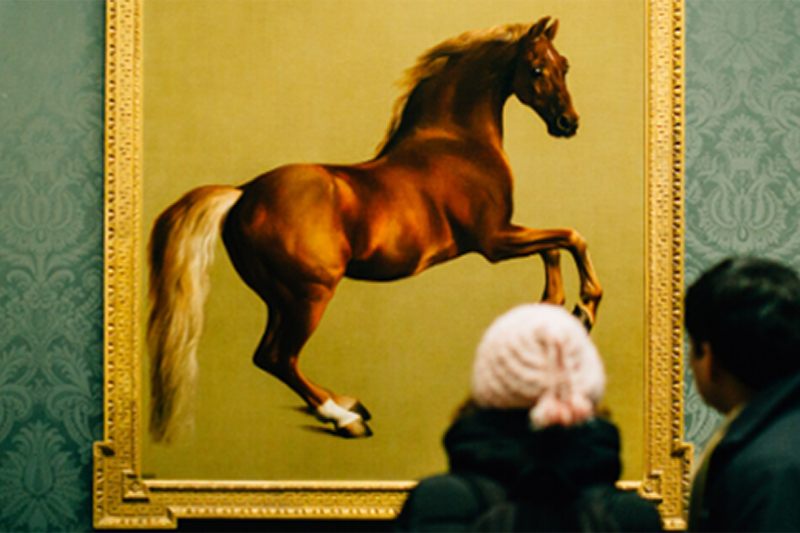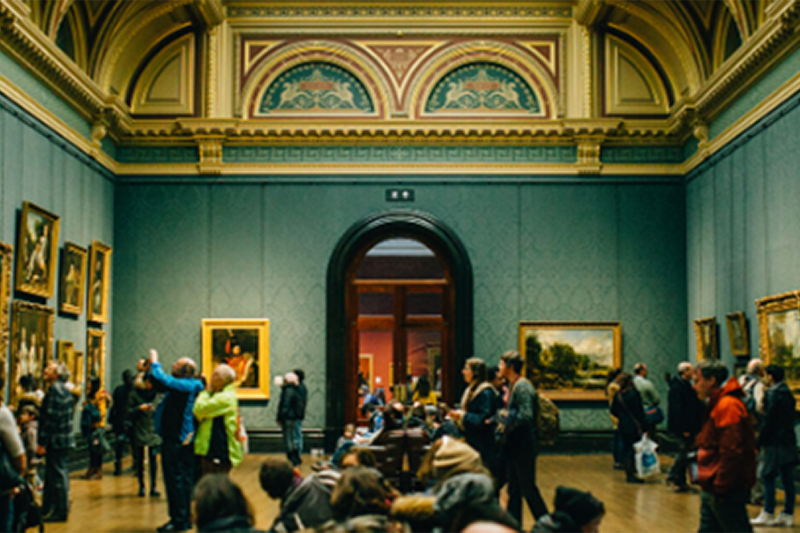Written by Jake Plenderleith on Monday 28 October, 2019
In 2016, a disturbing find in Geneva unwittingly revealed the link between the art market and terrorist groups.
To look at, the Geneva Free Port betrays no secrets. Few walking past would guess at the staggering number of valuable artworks stored away inside. Amongst pieces by Picasso (1,000 pieces by his hand alone are kept there) are antiquities from the oldest civilisations on earth.
In 2016, a number of these antique items were seized by Swiss authorities;[1] they were being housed at the Free Port having arrived via Qatar three years earlier. They had been looted from Libya, Yemen and Syria.
Funding terrorist operations with stolen antiques
The Free Port (thought to hold innumerable artistic treasures)[2] has long been a tax-free holding place for valuable art and antiquities, some of which make their way to prestigious auction houses or private collections.
This wasn’t the first time that stolen artefacts had been found there, but the discovery of these items in particular caused embarrassment in the art world, as their Syrian origin – at a time when the horror of the Syrian War was daily news – revealed an indirect link between the art industry and terrorist groups.
ISIS, the most notorious of the terror groups, has been flogging looted treasures as a means of securing finance since its inception. It was reputedly their second-highest source of income (The Guardian discovered historical artefacts from Iraq and Syria on sale in London in 2015,[3] though the practice has been going on for much longer).
Though ISIS is better known for destroying antiques rather than selling them (think Palmyra and the destruction of objects in the Mosul Museum), in the chaos of war where normal procedures are upended the opportunity to make money from that which they would destroy clearly proved too alluring.
Even in the footage released by the group smashing pieces in the Mosul Museum, archaeologists speculated that some of the most valuable pieces were suspiciously absent, and could have been deliberately spared so that they too could be sold.
The process, then, was simple: find antiquities, sell them, and use the funds to fund further operations. It’s a process that from ISIS’s perspective was wonderfully straightforward and financially rewarding.
More interesting for us is where these artefacts then end up, which is in Europe and North America, some of which find a temporary home in Geneva’s Free Port. These items could then potentially go on to be purchased at auction houses by an array of global buyers, usually anonymously.
At the time, French finance minister Michel Sapin described free ports as a ‘weak link’ in its anti money laundering (AML) and counter financing of terrorism (CFT) frameworks, drawing attention to the dark underbelly of the international art market and directly referencing Switzerland.
The country’s burgeoning reputation as a stop-off point for stolen artefacts en route to London and New York prompted those in the art market to take action.
Self-regulation ‘more and more important’

The Responsible Art Market (RAM) Initiative – established in 2015 in Geneva by the Art Law Foundation and cross-industry partners – released in 2017 a set of 10 guidelines[4] on combatting money laundering and terrorist financing in the art market. Founding members include Christie’s and Seydoux & Associés, with Mathilde Heaton, the former Christie’s legal director, helping draft the guidelines, which are voluntary and intended as means of sharing best practice.
Knowing your client and performing due diligence checks provide the backbone of the guidelines; risk assessments, a risk-based approach (RBA), staff training and ‘red flags’ are also encouraged.
These are standard measures that are widely applied across the financial services industry, so why did it take so long for the procedures to trickle down to the art market?
It has something to do with the unique make-up of the art auction industry. Establishing guidelines has been tricky for an industry whose bedrock is secrecy and anonymity, where unknown buyers are willing to spend lots of cash in return for privacy.
This confidentiality culture makes the art market tick, but it is also its principal vulnerability, which led Thomas Christ of the Basel Institute on Governance to describe the market as ‘an ideal playing ground for money laundering’.[5]
The Basel Institute had initially helped RAM in the crafting of its guidelines, but pulled out of the project because they believed the guidelines, which are for the Swiss market only, should have global reach.
‘Collective action only makes sense if the major players in the market subscribe to them and hold people accountable,’ Christ said. In addition, the Institute felt that it was a major weakness that the guidelines have no means of being effectively enforced.
In London, a seminar joint hosted by Art Market Minds and law firm K&L Gates, sought to raise awareness and generate discussion around managing risk in the art industry.
Art market advisor Ivan Macquisten described self-regulation as becoming ‘more and more important’, something that could be surmised from the fact that such a meeting was being held at all.
Others within the industry also acted. Sotheby’s and Christie’s both have compliance checks already in operation, and Christie’s directly addresses the issue of looted antiquities from Syria and Iraq on its website.[6]
These measures, along with RAM’s Guidelines, represent a solid base, but more thorough and widespread measures will need applying if the art market is to avoid further reputational damage.
Efforts to combat the issue must continue

There is a risk that as ISIS’s hold on Syrian territory diminishes further the issue could be forgotten. Fortunately, it seems that legislators in the EU have gotten the point. In December 2018, the European Commission released news of its agreement reached on the import of illicit goods from non-EU members.[7]
Though the European Parliament adopted this agreement, its final adoption by the Council has yet to occur. Another point of interest was the EU’s Illicit trade in cultural goods in Europe[8] report from July 2019, which articulated a lack of transparency and regulation in the art market.
The report also touches on something worth reflecting on: looting is organised crime ‘first and foremost’. Despite our understandable hand-wringing over terrorists using the art and antiquities trade to raise funds, it is organised crime groups who have historically been those that have exploited this market. The report warns of the danger of overlooking this fact.
It’s a useful, if dispiriting, reminder that exploitation of this market is not linked to one group. The threats to consider are various and our weaknesses are self-evident. Greater efforts and awareness are required by organisations – just like tech businesses have combined to help fight human trafficking – and by individuals. Only then will terror groups begin to be starved of a lucrative income source. Lives, and the world’s common artistic and historical heritage, are at stake.
_________________________________________________________________
Would you like to develop your knowledge?
The ICA Specialist Certificate in Combating the Financing of Terrorism provides a foundation knowledge of the meaning of terrorist financing and proliferation, an introduction to the legal frameworks associated with global counter-terrorist financing strategy and an overview of the key terrorist financing threats and risks.
_________________________________________________________________
This article forms part of the #BigCompConvo - Join us as we explore and debate the latest challenges and issues facing you and regulatory and financial crime compliance professionals all over the world. If you’d like to contribute an article as part of the Big Compliance Conversation get in touch with us at contributions@int-comp.org
You may also like to read: Are you accidentally funding terrorism?
_________________________________________________________________
References:
[1] The Guardian, ‘Looted Palmyra relics seized by Swiss authorities at Geneva ports’, 3 December 2016: https://www.theguardian.com/world/2016/dec/03/looted-palmyra-relics-seized-by-swiss-authorities-at-geneva-ports – accessed October 2019
[2] Will Gompertz, ‘Geneva Free Port: The Greatest art collection no-one can see’, BBC News, 1 December 2016: https://www.bbc.co.uk/news/entertainment-arts-38167501 – accessed October 2019
[3] Rachel Shabi, ‘Looted in Syria – and sold in London: the British antiques shops dealing in artefacs smuggled by Isis’, The Guardian, 3 July 2015: https://www.theguardian.com/world/2015/jul/03/antiquities-looted-by-isis-end-up-in-london-shops – accessed October 2019
[4] Responsible Art Market, ‘Guidelines on combatting Money Laundering and Terrorist Financing’: http://responsibleartmarket.org/guidelines/guidelines-on-combatting-money-laundering-and-terrorist-financing/ – accessed October 2019
[5] Graham Bowley and William K. Rashbaum, ‘Has the Art Market Become an Unwitting Partner in Crime?’, The New York Times, 19 February 2017: https://www.nytimes.com/2017/02/19/arts/design/has-the-art-market-become-an-unwitting-partner-in-crime.html?_r=2 – accessed October 2019
[6] Christie’s, ‘Art + Soul – Our Areas of Focus’ – accessed October 2019
[7] European Commission, ‘Security Union: Agreement to crack down on illicit trade in cultural goods’, 19 December 2018: https://europa.eu/rapid/press-release_IP-18-6733_en.htm – accessed October 2019
[8] Europa, Illicit trade in cultural goods in Europe: Characteristics, criminal justice responses and an analysis of the applicability of technologies in the combat against the trade, 2019: https://op.europa.eu/en/publication-detail/-/publication/d79a105a-a6aa-11e9-9d01-01aa75ed71a1 – accessed October 2019


